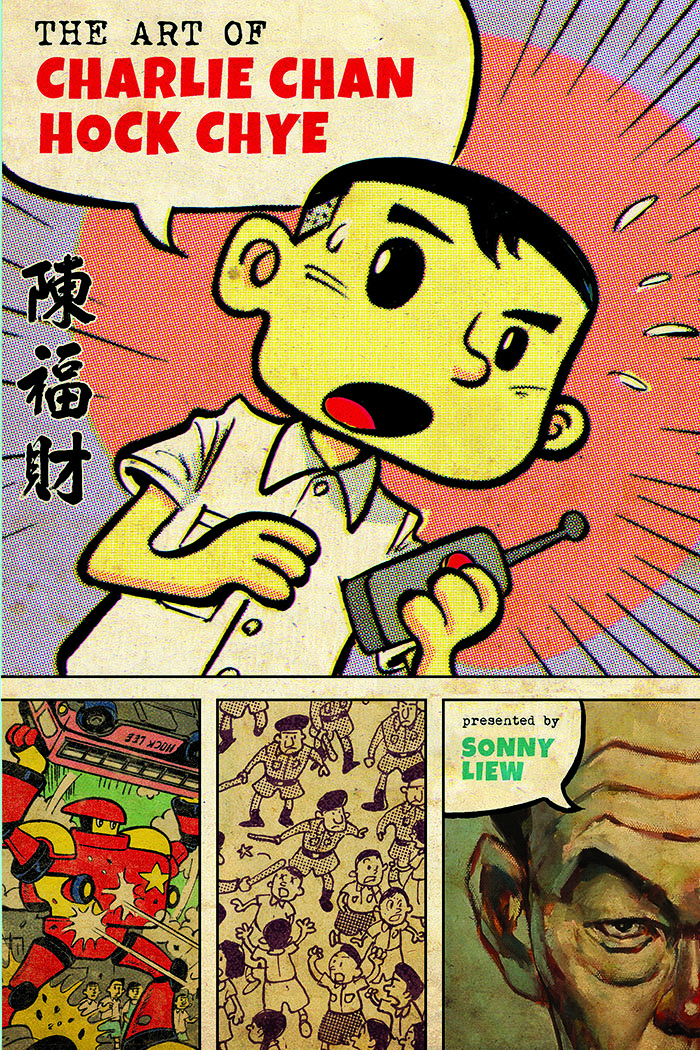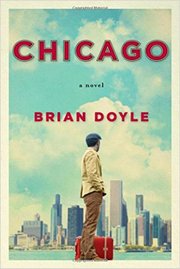Beauty ensnares the heart. It doesn't have to explain, it just is. It darts into our frame of reference and is instantly and totally registered. Why? George Santayana supposed there was "in our very nature a very radical and widespread tendency to observe beauty, and to value it."
A critic's work is sometimes reductive; sometimes a clumsy critic can undermine the effect of the work observed. You can anesthetize the butterfly, murder the mystery, pin it in your album. And in the process, what is ineffable is lost.
This week all I want to do is show you some beautiful books.
...
The Art of Charlie Chan Hock Chye, "presented" by Sonny Liew (Pantheon, $30), is a book I probably wouldn't have noticed if not for a special promotional push from the publisher. Liew, a Singapore-based comics artist, will be in Arkadelphia and Little Rock next week for appearances at, respectively, Henderson State University in Arkadelphia and the Arkansas Literary Festival. So they sent me a book.
And wow.
While I'm familiar with The Watchmen, Frank Miller's The Dark Knight Returns and Art Spiegelman's Maus: A Survivor's Tale, graphic novels are generally outside my ken. I appreciate that they deserve a critic who has read (and looked) deeper into the form than someone whose comic book phase ended just about the time he started taking an interest in The Sporting News. (On the other hand, I have read Scott McCloud's invaluable books Understanding Comics: The Invisible Art and Reinventing Comics: How Imagination and Technology Are Revolutionizing an Art Form, which comprise a pretty decent pocket education.) But Liew's book is remarkable, a meta-history of Malaysia as told through the biography of "Singapore's greatest comics artist," the fictional, but entirely credible, Charlie Chan Hock Chye.
Liew presents Chye's story through an ingenious series of images that include mocked-up examples of the artist's juvenilia, sepia-toned photographs, fabricated newspaper clippings, three-color Sunday newspaper panels, sketchbooks, propaganda posters and all manner of paraphernalia from Chye's working life. The effect is so convincing that some early reviewers were fooled into believing Chye was an actual person.
But while Chye's personal story is satisfyingly arresting, funny and poignant, Liew uses it to subtly unspool an allegorical critique of postwar Singapore -- incorporating such real events as the Hock Lee Bus Incident and the race riots of July 1964 -- as well as the subversive history of cartooning. It's a tremendous achievement, a multimedia argument for the liberating power of personal expression.
I've never seen anything quite like it. It's just dazzling.
...
Similarly, Brian Doyle's Chicago (Thomas Dunne Books, $25) is a work I don't quite have words for. It's a lyrical coming of age story about a young man who takes up residence in a small apartment on the titular city's near north side. Having recently graduated from college, he moves in on the first day of summer and stays for five seasons. (Not that it matters too much, but the year in question must be 1976, for our unnamed protagonist writes ecstatically about the team the White Sox fielded the next season, with its stellar outfield of Ralph Garr, Chet Lemon and Richie Zisk with Oscar Gamble in reserve. They were only together during the 1977 season.)
During this time, he encounters an array of colorful, deftly delineated characters -- "the shopkeepers and cops and nuns and bus drivers and carpenters and teachers who composed the small vibrant villages that collectively were the real Chicago." He plays a lot of street basketball and eventually falls in love. Oh, and there's a wonderful dog of "indeterminate breed," who may have been a companion to Abraham Lincoln.
While Doyle's reputation as a gentle storyteller precedes him -- I've encountered his essays online -- I wasn't prepared for the sheer musicality of his prose, which is positively Fitzgeraldian. Here's an excerpt:
"Almost all the people and animals I lived with were kind and generous; some were remarkable in ways I have never forgotten, and never will; and three in particular were so riveting in their own mysterious and astonishing ways that I want to account them, as best I can, before no one is left to tell you about Edward, and Mr. Pawlowsky, and Miss Elminides, who was the owner of the building, though she was quite young, and regrettably, as she said with her gentle smile, bereft of skills in the maintenance and repair of substantial things, which is why she deferred such matters to Mr. Pawlowsky, who was aided in his work, and in many other things, by his companion Edward, a dog.
"But to say of Edward merely that he was a dog, and leave the description at that, would be a grave disservice not only to him but to you, for he was one of the most subtle and gracious beings I ever met, and the litany of his adventures alone would fill a shelf of books, before even getting to his influence on other beings, for example, which was both considerable and renowned, so much so that creatures of various species would come to Edward for consultation and counsel, from birds to people of all manners and modes of life.
"But I am ahead of myself already. Let's pause here, and stand in front of the apartment building for a moment -- it's a lovely September afternoon, crisp and redolent, and we can smell roasting lamb from the Greek restaurant around the corner, and the first fallen leaves from the oaks and maples along the lake -- and begin as I did, by walking up the three stone steps, carrying my worn shiny basketball and crammed duffel bag, to meet Mr. Pawlowsky."
I read more than 100 books a year, and most years two or three stick with me. This is one of them. Part of that may be due to my brief residency in Chicago, which Doyle seems to know intimately. (I'll bet he lived there for about the same time as his protagonist.) I've already given away my copy of Chicago to a couple who lived in that city for decades; I'd like to see if they respond to this lovely, lyrical valentine to a particular place in a particular time.
...
A friend loaned me a copy of Arkansas writer (and director of Hendrix College's Hendrix-Murphy Foundation Programs in Literature and Language) Hope Coulter's first book of poetry The Wheel of Light (Brick House Books, $10). Having admired her work since the days of The Errand of the Eye (1988) and Dry Bones (1990), novels published by the dearly departed Little Rock publisher August House (and now sadly out of print), I was pleased to find that she hasn't lost her shrewd, sharp edge or empathy. There's a slow insistent quality to these poems, drawn from situations domestic and cosmic and much concerned with mortality but never sentimental:
The gaze of the old is wide, unafraid
"Is it you," it asks, "new lump, twinge, mole?
Is it you, swerving headlights in the night?"
The collection feels carefully compiled, and some of the poems have the considered heft of something cellared and aged. There is a precise language and meter, an intelligent and organized banking of inner fire. It doesn't blaze, it smolders and glows.
...
The Illustrated Compendium of Amazing Animal Facts, by Swedish architect and illustrator Maja Safstrom (Ten Speed Press, $14.99), might be intended as a children's book, but I'm not giving it away anytime soon. I love its delightfully quirky illustrations and factoids presented dryly ("It is physically impossible for pigs to look up into the sky.") or with special sauce ("A Blue Whale's heart is as big as a car!" or "The longest recorded flight of a chicken is 13 seconds!").
For more of Safstrom's work, visit majasbok.se or follow her on Instagram @majasbok.
Email:
blooddirtangels.com
Style on 04/10/2016


